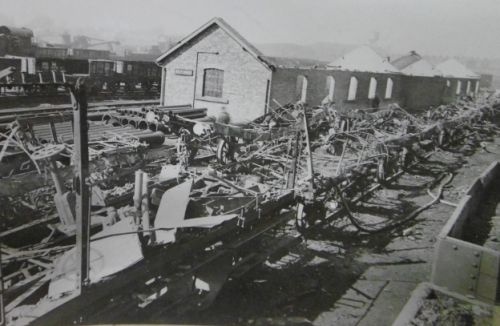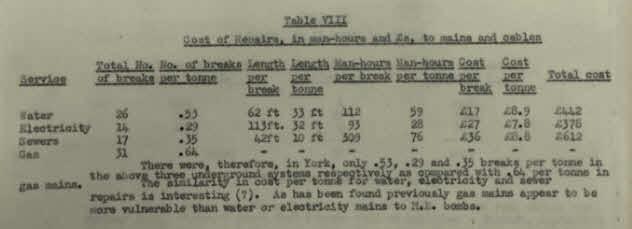The Official Aftermath
The first report on the air raid was prepared locally by the Regional Technical Information Officer (RTIO) in Leeds and dated 30th April. It stated that only one day had been spent collecting information but it was confident that 90% of the incidents had been investigated.
It gave a basic summary of the raid and made specific points about the effectiveness of the various types of shelter and the discovery of a new type of Luftwaffe incendiary bomb container.
At the same time, the Ministry of Home Security in London arranged for a Mr J R Illingworth to arrive in York the following day to prepare a report. His arrival is described below.
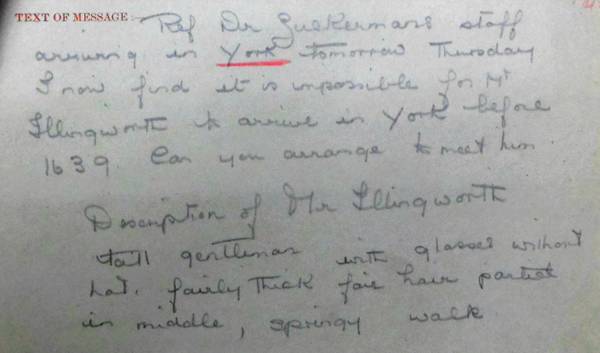
This note from the Ministry of Home Security informs officials that Mr Illingworth will arrive on the 16:39 train and asks that he be met. Mr Illingworth's description is given as, "a tall gentleman with glasses without hat, fairly thick hair parted in the middle, springy walk."
Mr Illingworth's report dated 4th May 1942 was more detailed and contained some criticisms.
It began with a description of the raid, an extract from this is transcribed below.
"Searchlights were active, but A.A. was very light and from the N.W. only. There was no balloon barrage. Weather was ideal for raiding; a strong east wind and very good visibility. There was a bright moon with a very clear sky. Even with these weather conditions the enemy dropped 37 flares. The significance of this highly important fact will be discussed later when we study of the locations of damage and target areas.
Two distinct directions of approach were used, both from the E. One was a direct line from Flamborough to York, the other from Hornsea to York. The aircraft arrived singly, or at the most in pairs, at short intervals, spent very little time over the target and returned by the same route as approach. Whilst over the target area, a number of aircraft circled to the north, making the bombing run from N.W. to S.E. along the line of the river."
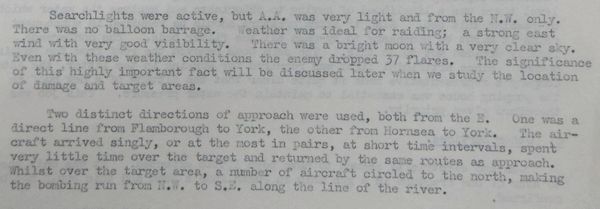
The actual document.......it is interesting to note that the use of searchlights and some anti aircraft guns are recorded.
Mr Illingworth states that the fire services were reputed to have done their work well but certain reports made this statement "worthy of investigation".
In areas around the goods and passenger areas of the LNER there was "evidence not only of the spread of fires but of whole rows of trucks, buildings and stores being allowed to burn themselves out."
The burnt out remains of a goods train at the York yards.
Conversations with local residents elicted statements that "the fire brigade found it difficult to work and stood around helplessly at times".
A further criticism of the fire service is shown below.
"The feeling against the fire service was rather bitter in one badly damaged working class residential district. Apparently no fire appliances of any kind appeared until half an hour after the 'all clear', and houses had been burning from soon after the beginning of the raid. When a fire squad did arrive in one burning street with its apparatus, its methods of working aroused still more criticism. Apparently they concentrated their two hoses on a house at the end of the street which was already gutted, and whose flames were blowing into an open field, whilst other houses less burned and which might have been saved were allowed to burn. The residents appealed in vain to these firemen to turn their attention to the other houses and there appeared to be no one in charge to whom stronger appeals could be made. Finally the police were asked to move the firemen to other houses which could be saved, with better success."

The critical section from Mr Illingworth's report.
These may have been isolated incidents as a very comprehensive report (Brief 685....over 21 pages) gives information about individual and clusters of fires and paints quite a different picture. The fires were recorded by "mean time of fall", "sector number" and then given a "fire number"...... the largest number being 367.
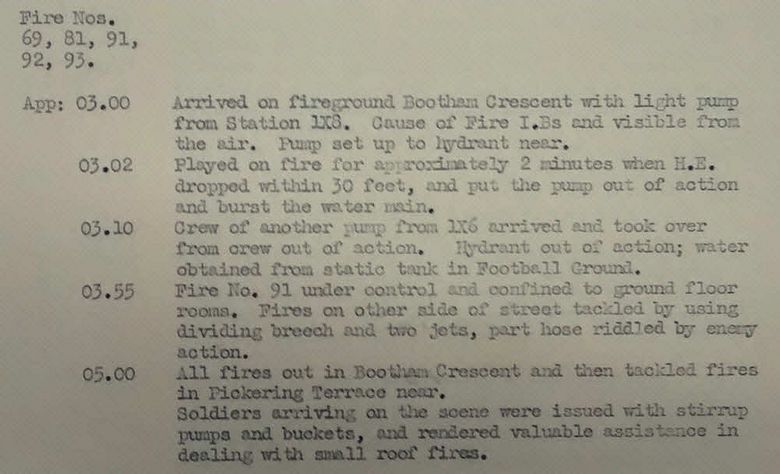
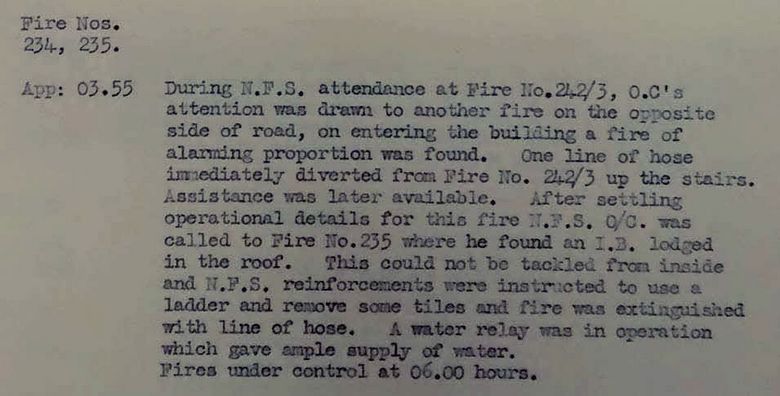
As can be seen from these two small extracts, the NFS worked under difficult and often very dangerous circumstances.
The fire prevention arrangements for LNER property appear to have been very efficient.
The following report, dated 4th May, gives basic details of the raid and general observations.
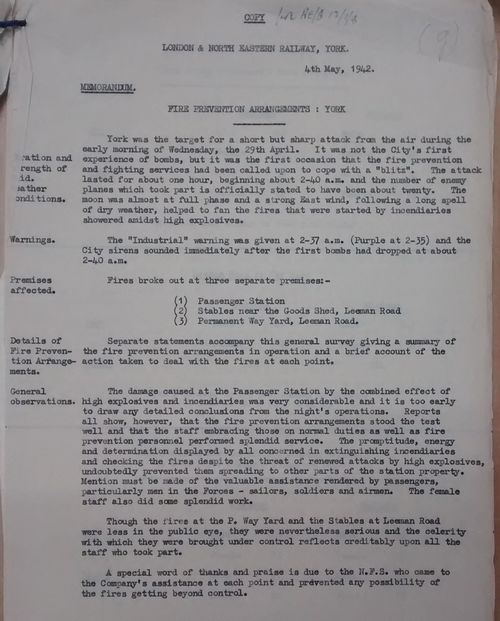
Click for a larger, easier to read version.....opens in a new window.
Mr Illingworth's report looked at the use of shelters and recorded positive comments about their effectiveness.
"In another case an indoor "T" type shelter in use in a house demolished by a direct hit saved the lives of three people who were uninjured.
General comment amongst all the people was that if another raid occurred they would definitely go to their shelters. They were really impressed by their neighbours' safety in shelters."

The shelters were generally a postive feature of the report.
Towards the end of the report he points out that on such a clear night the use of flares would not have been necessary if the Luftwaffe had wished to bomb the Minster or other ancient buildings. With the extensive use of flares he believes the targets were the railway installations, RAF Clifton, the Handley Page aircraft factory (in the same area) and possibly the sugar beet factory.
Other comments recorded were that, "there were too many contradictory orders being given from the top and too many city departments were trying to organise the same service".
It was also felt that too many minor injuries were "sustained by wardens who need not have been away from cover."
Another critical section from Mr Illingworth's report.
He concludes however, by saying that the majority of the failures were due to the fact that the city was experiencing its first significant air raid.
Following this "initial" report there then followed another team on the 15th May consisting of ten officers.
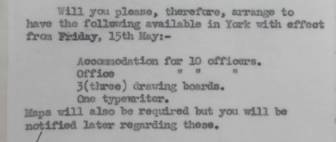
One of the many requests received to support the inspection teams.
They produced a staggering amount of detailed information some of which might seem to be of questionable value.
One of the more understandable tables produced. Others were extremely complex with a detailed statistical analysis.
Somewhat chillingly, the statistics include the facts that:
- Number of deaths per tonne of H.E. = 1.6
- Number of seriously injured per tonne of H.E. = 1.8
- Number of slightly injured per tonne of H.E. = 2.3
Such was the demand for information that, eventually, there was something of a backlash.
The York Gas Company seems to have been asked for "a piece too far".
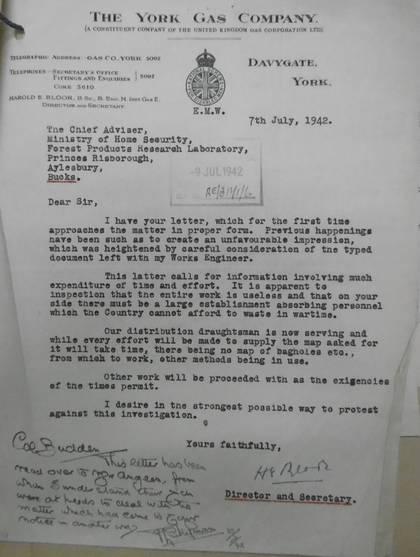
This letter from the York Gas Company needs no explanation.
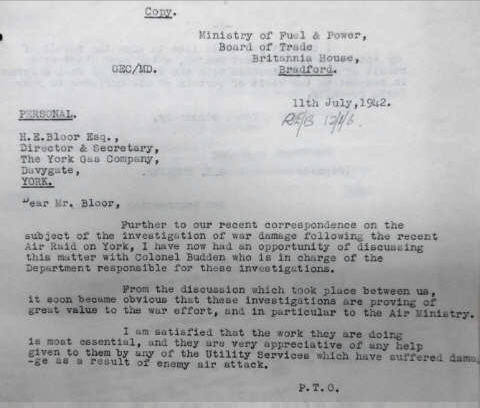
He quickly received a placatory response.
The required information was eventually produced and one example which shows the damage to a gas main in Queen Anne's Road is shown below.
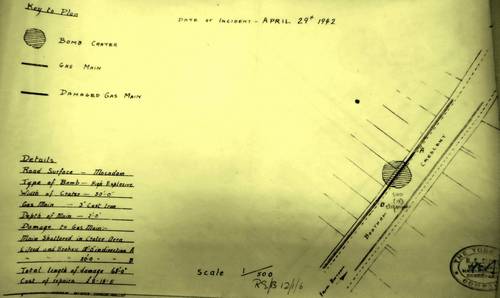
The cost of the repair is given as £8-18-5d.
Click this link to view a larger version of the report (opens in a new window).
A total of 64 incidents affecting public utilities in streets were recorded.
- 16 water
- 15 sewers
- 20 gas
- 13 electricity
Additional reports and requests for information continued well into 1943.
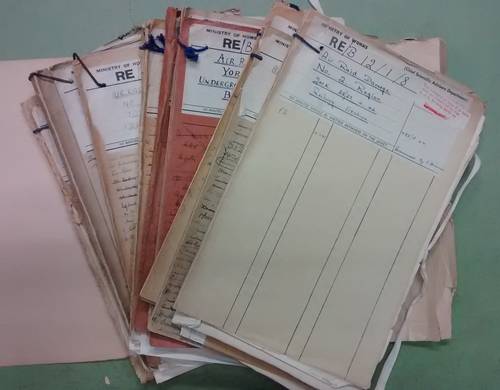
A selection of the many files that were created regarding the April 1942 raid on York.
All the extracts of documents shown on this page are copyright of the National Archives and are reproduced here with the permission of the National Archives.
